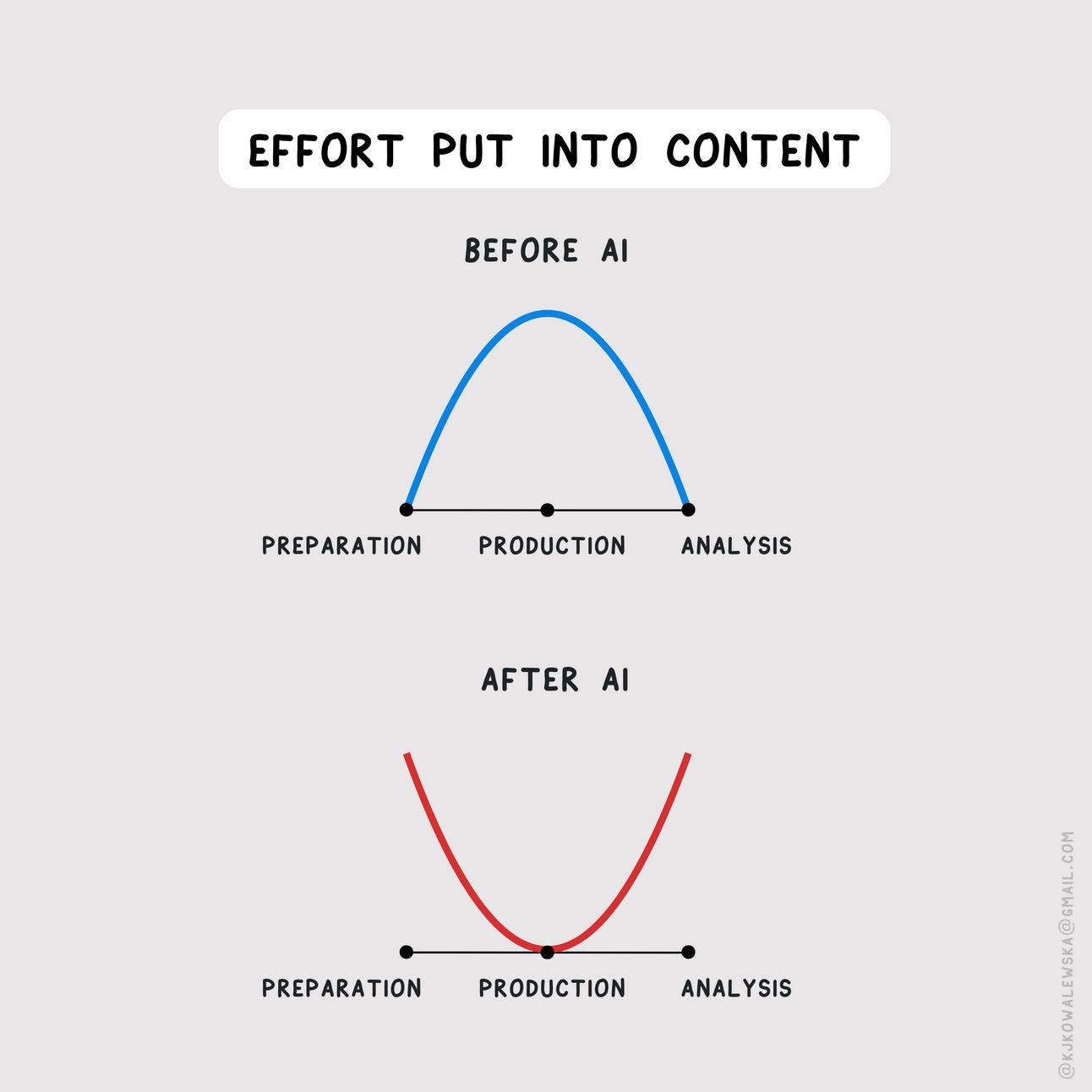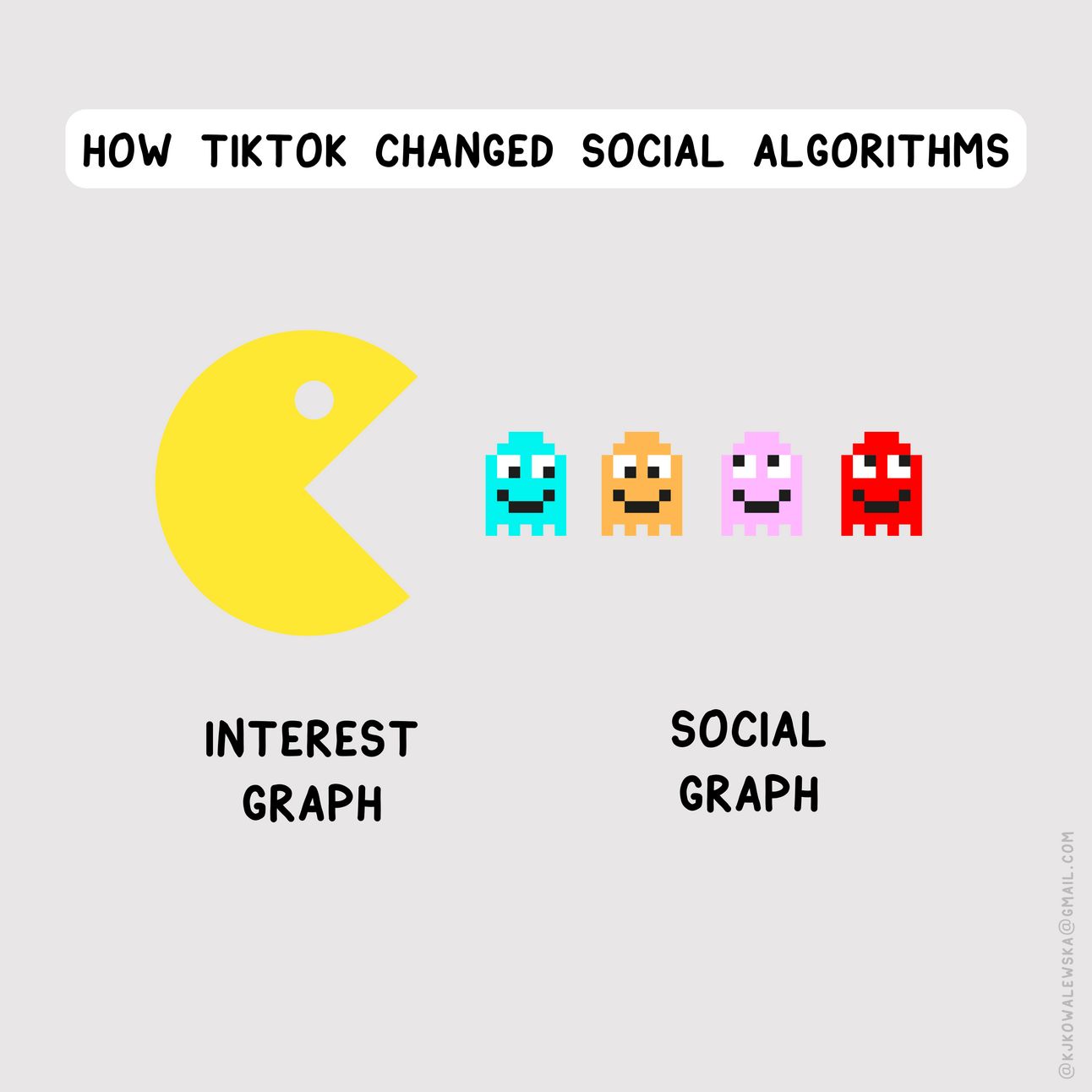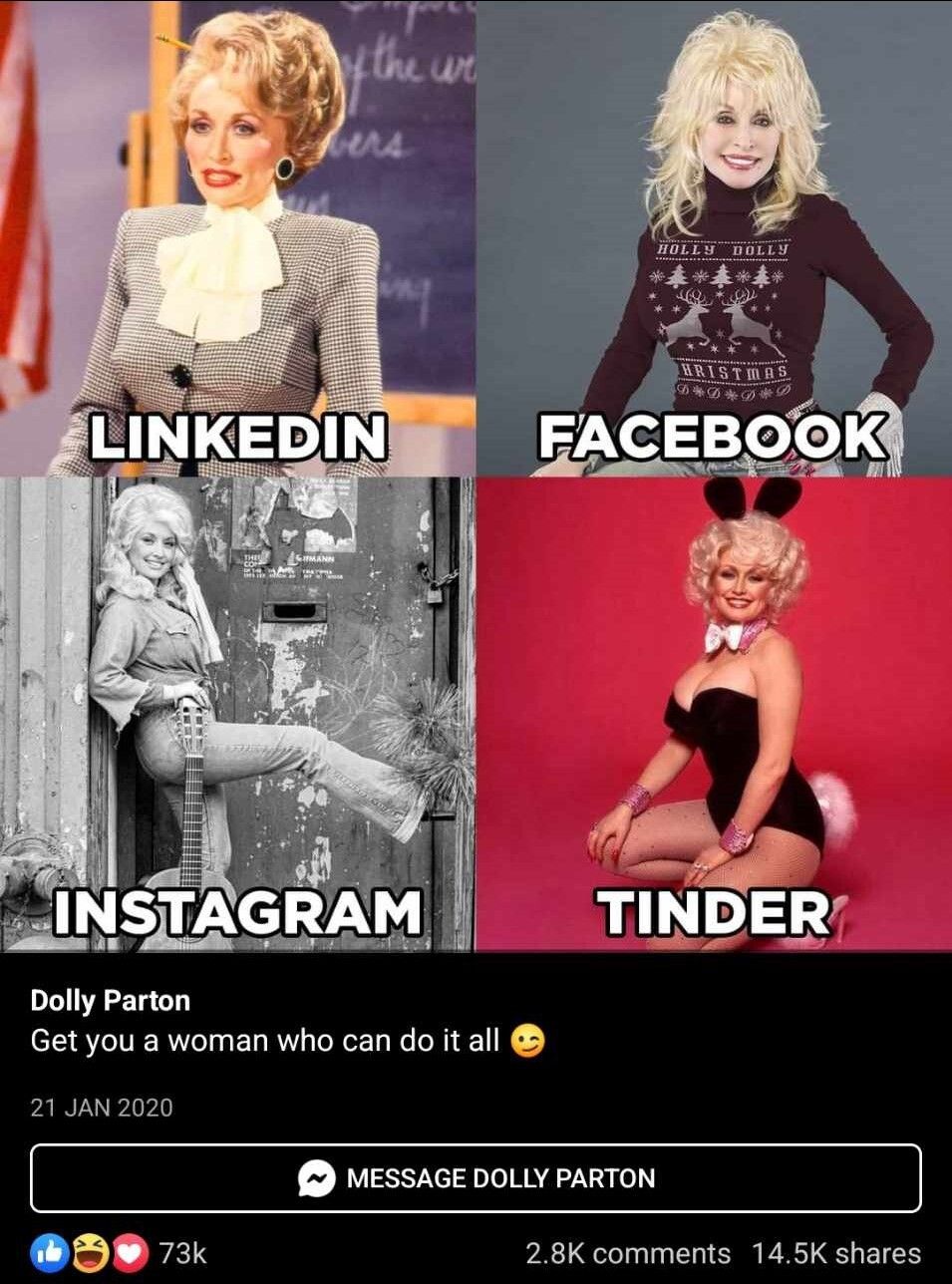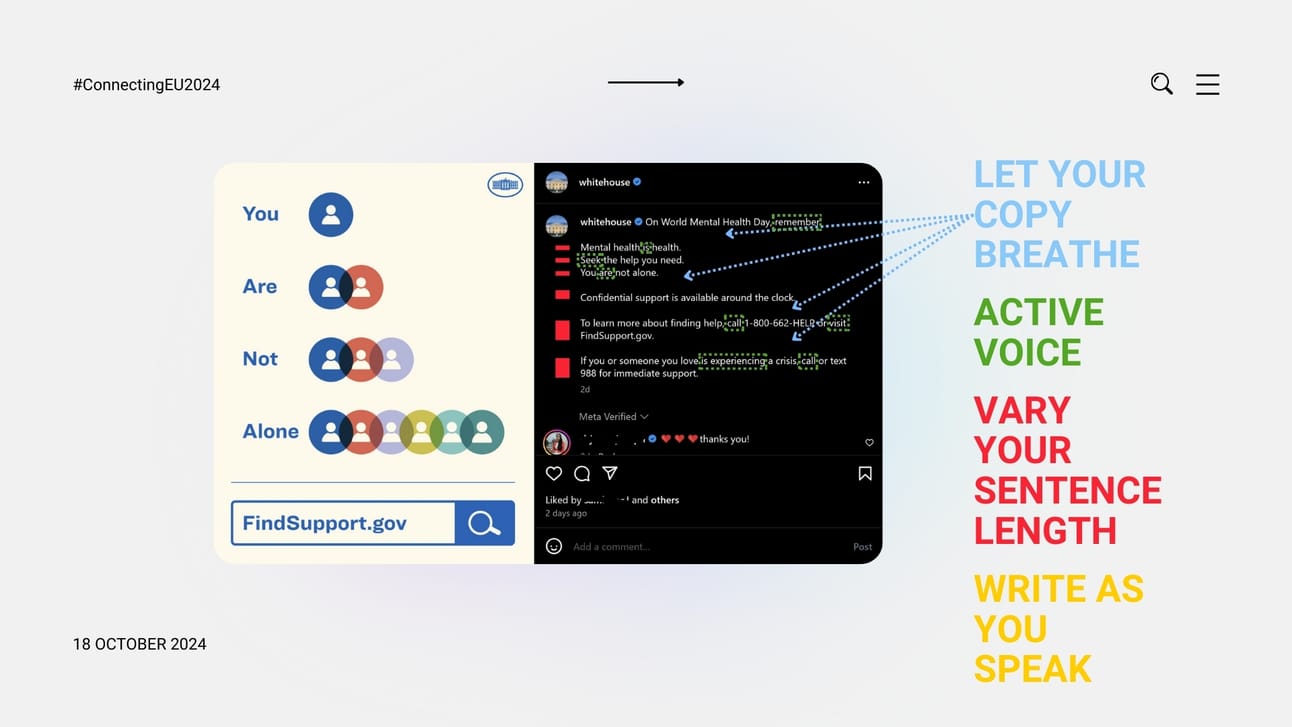- Notes from Kasia
- Posts
- ✍️ How to write on social media in the age of AI and TikTok
✍️ How to write on social media in the age of AI and TikTok
Tips, frameworks and resources for impactful writing
Read time: 9 minutes.
Social media is visual, but behind every great visual or video lies strong writing.
While people love to consume visual content, it’s the writing that brings it all together. Whether it’s a brief for your designer, a video script, micro-copy on a visual, or that catchy caption, it’s the words that give everything meaning.
Without strong writing, there’s no engaging, stop-scrolling content.
Good writing is even more crucial in the age of AI and TikTok.
AI has accelerated content production and made it ridiculously cheap (production costs are nearly zero). In fact, Gartner predicts that by 2025, 50% of all business content will be AI-generated.

TikTok has changed the game, too. With its algorithm based on interests, rather than who people follow, it keeps users engaged for longer. And other platforms have caught on - earlier this year, Mark Zuckerberg revealed that over 50% of the content on Instagram and 30% of Facebook posts are now recommended by AI.

The growing volume of content on social media makes it noisier than ever. Our feeds are flooded with posts from organisations, brands, and creators - many of whom we don’t even know.
In this crowded space, good writing helps your content stand out, capturing attention and resonating with your audience.
No matter how visual social media has become, strong writing remains the superpower in every social media manager’s toolbox.
Writing starts before you even tap your keyboard
Before we jump into practical tips, there’s one truth I’ve learned from 12 years of writing for social media: pre-writing really matters.
Here are three elements that help me with pre-writing:
Research, research… and more research.
While working for the EU institutions’ social media teams, I often need to write on topics I don’t know much about. Thorough research is essential. I always review background materials, news, and relevant industry updates, and search social media to gather insights. And I talk to the in-house experts.
Know your goal.
Good copy is nothing if it doesn’t serve a purpose. Every social media post should have a clear objective - whether you’re entertaining, educating, inspiring, or convincing your audience to take action.
Rule of thumb: one post = one goal.
One key message per post.
A common mistake I see is trying to squeeze too much into a single post. This only confuses your audience and weakens your message. Keep it focused and simple.
Now that we’ve covered the basics, let’s look into what makes good writing for social media.
"Know your audience" may be a cliché in our industry, but it’s still at the heart of effective writing.
Whenever I write, I always come back to these four key questions:
Will my audience understand the references or tone in this copy?
What’s interesting or valuable about this content from their perspective?
How will they respond to cultural references or modern internet slang? Are emojis a good fit here?
Do I need to add more context to make the message clear?
Tailoring your writing to your audience isn’t just about who they are - it’s about what they’ll connect with.
… and platform-specific
In 2020, Dolly Parton went viral with her "Dolly Parton Challenge," posting images of herself styled for different social media platforms. The post quickly caught on as people worldwide joined the trend.
What we can learn from Dolly’s post is that depending on where you're posting, you may need to showcase a different side of your organisation.

On LinkedIn, you’re professional and polished - talking to stakeholders and industry leaders. On Facebook, you’re friendly and neighbourly, like Dolly in her Christmas sweater. Instagram is all about storytelling with a strong personal style. On X, you’re quick and newsy.
Each platform has its own vibe, and good social media writing adapts to fit that mood.
Chances are, if you check the analytics of your social media profiles, you’ll see that most of traction comes from smartphone users. This is why optimising your content for mobile is crucial - not doing so leads to a poor user experience and, ultimately, less engagement.
In other words, mobile-optimised content can dramatically improve your results.
For me, writing for mobile is really about designing your posts to be visually appealing and easy to digest on small screens.
Let’s break it down.
Start with a hook: Your first line should grab attention instantly and encourage users to click “See more”. That click is a powerful signal to algorithms that your content is engaging. I wrote an entire newsletter on mastering the art of the first line, which you can explore here.
Craft the body:
Below you’ll find some simple frameworks to inspire your own explorations and experimentations.

What matters is also the visual layout.

Add a call-to-action (CTA). Give people something to do after reading your post, a reason to engage. Write it from your reader's point of view. What is in it for them? Rule of thumb: 1 post = 1 CTA.
Creating content for social media isn’t just about catching attention - it’s also about making sure everyone can engage with it, including people with disabilities.
That’s why accessible writing and design are essential in making sure your social media content can reach everyone.
You can start as easy as adding Alt text to images and GIFs, describing what’s in the image for screen readers. Attention: Alt text should enhance accessibility, not be a space for adding extra copy or keywords.
For more on accessibility, I highly recommend checking out the guide from Accessible Social - it’s the most comprehensive resource on the topic I’ve come across (and the PDF is available for free!).
Be AI-thentic
When I scroll through social media, I spot many posts that look alike - many of them are clearly created using AI.
Don’t get me wrong - there's nothing bad in using AI, but over-relying on these tools results in people and organisations losing their unique voice that makes their content stand out.
That’s why I’m a big supporter of "AI-thenticity" that blends AI efficiency with human authenticity.
Here’s how I approach it:
AI is my assistant, not the creator. I use it to streamline processes, not to replace my voice.
I always review and edit AI-generated content with a personal touch.
I treat AI like a conversation partner, giving it guidance and feedback rather than simply using it like Google.
Most importantly, I share my personal stories and experiences - something AI can’t replicate, ensuring my content remains “mine”.
(These highlights are from a workshop I recently led at the Connecting EU seminar, hosted by the European Economic and Social Committee. A huge thank you to the EESC team for the invite!)
👇 Before you go
Was this newsletter useful to you? I'd love to hear your thoughts! Reply and share what stood out or what topics you'd like to explore in future issues. Or you can vote below.
How did I do?Click a button below to provide feedback: |
Until next time, keep writing!
— Kasia
Reply